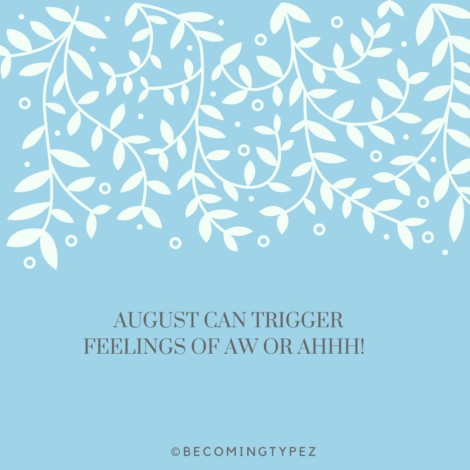 Everywhere I’ve looked in the past week or so, I seem to encounter this idea: September, the other January. A time to reset, start anew. Do better, be better. The second “New Year.”
Everywhere I’ve looked in the past week or so, I seem to encounter this idea: September, the other January. A time to reset, start anew. Do better, be better. The second “New Year.”
This concept is not new for those of us who teach. September literally is the beginning of a new year. And each brand-new year is full of endless possibilities. It’s a time to refine what’s worked in our practice and try something new to replace the things that haven’t. September is our annual do-over. That’s why September is so great. For us.
In spite of our excitement, we know September and all of its unknowns can be a tricky, stressful, challenging time for our kids. And the gift of experience heightens our awareness for spotting worry and unease which we work to minimize with a treasure trove of get-to-know-you and community building activities. During September, we take our time settling in, establishing routines to foster an environment of encouragement and student success.
One of the ways we build our students’ confidence is by building a classroom community through whole group activities that allow us to become a “we.” Tour any elementary school in September and you’re likely to see different examples of students’ hopes and wishes displayed, my classroom included. Each September as I open another school new year with a new group of students, I read Happy School Year! by Susan Milord aloud. In the book, every student in the school makes a wish for a happy school year. Just like last year and the year before and the year before that, I invite my students to make a wish for the new school year. My students think about the things they want to learn, skills they want to develop, friendships they hope to make. After making a wish, students write their wishes for a great year on paper cupcake cut outs that they decorate with crayon. By putting pencil to paper, my students make their wishes for a happy year real, their goals visible.
 For years, I’ve embraced the idea of September being the marker of a new year, a time when anything is possible, a month of optimism. Then I thought of my daughter who had recently graduated from college. And the rest of the “big kids” who had not landed where they wanted to be yet. September is here anyway. And for the first time in nearly two decades, they are no longer part of a school community, following academic calendars, working towards graduation requirements. They’ve crossed the goal line. Sort of.
For years, I’ve embraced the idea of September being the marker of a new year, a time when anything is possible, a month of optimism. Then I thought of my daughter who had recently graduated from college. And the rest of the “big kids” who had not landed where they wanted to be yet. September is here anyway. And for the first time in nearly two decades, they are no longer part of a school community, following academic calendars, working towards graduation requirements. They’ve crossed the goal line. Sort of.
This made me think of the flip side of the September coin. Where I find September rejuvenating, a return to structure, routine, my calling; there are scores of young people feeling the opposite. The infinite possibilities of “the rest of your life” can be mind-boggling and the prospect of finding work that both sustains and fulfills overwhelming. Statistics tell us that it takes college graduates on average three to six months post-graduation to find work in their chosen fields. That means that scores of young people are currently unemployed or underemployed. It’s no wonder these kids find themselves feeling untethered; like balloons whose strings have been let go, floating to places unknown.
And then it occurred to me. Why is it that we encourage our younger students to reflect each September on the things that would make them happy in the coming months? Then help them to set personal goals, which we help them to attain? But we discontinue this practice once our kids grow older, become “big”? What if we parents and mentors asked these big kids to take a moment, reflect on what they hope to accomplish in the coming months? Visualize, articulate the things that would make them happy in the next year? Guide them in the direction of following their dreams, remind them that we struggled, too, many years ago? What if rather than the month to figure out the rest of their lives, September became the month of hopes and dreams, the month to make wishes and devise plans? A time to take a breath and figure things out. For now.
Then September could be the start of a happy new year.
©Kathie Z.







